
Key Takeways
- Proactive planning, scenario drills, and risk mapping help minimize the impact of a crisis and protect brand equity.
- Rapid, clear, and consistent communication across all channels preserves trust and limits brand reputational damage.
- Platforms like BrandLife centralize assets, enable collaboration, and maintain brand consistency during high-pressure situations.
- Authentic apologies, corrective measures, and stakeholder engagement, supported by centralized brand management, restore confidence and loyalty.
A single misstep can jeopardize years of brand-building efforts. Whether it’s a poorly handled customer complaint, a supply chain issue that goes viral, or an employee-related controversy, reputational damage spreads quickly across digital channels.
Marketing teams, public relations managers, and brand owners face the pressure of responding fast, keeping messaging consistent, and maintaining customer trust.
Without clear workflows or accessible digital assets, responses often get delayed or fragmented. It results in negative publicity, loss of revenue, and weakened customer loyalty.
Effective brand reputation crisis management is about being proactive: safeguarding brand equity, preserving customer trust, and minimizing the cost of recovery.
This guide explores how organizations can prepare for, respond to, and rebuild after crises—while demonstrating how digital asset management (DAM) tools, such as BrandLife, help keep every channel aligned.
Understanding Brand Reputation Crisis Management
Unlike general crisis management, which can cover natural disasters or operational disruptions, reputation-specific crises focus on public image.
These crises require both strategic communication and consistent brand representation to avoid erosion of consumer confidence.
For BrandLife, it means having systems in place not just for marketing, but for communications, legal, customer service, and leadership.
Common Types of Brand Crises and Their Impact
No brand is immune to crises. From product flaws to social media blunders, each type of reputational setback can trigger financial losses, regulatory scrutiny, or long-term damage to customer trust.
Common types of brand crisis include:
Product safety failures and recalls
Even a single faulty product can trigger recalls, lawsuits, and widespread media attention. Peloton lost millions addressing safety issues, while Tylenol’s 1980s cyanide crisis remains a textbook case of reputational fallout.
Early detection, quality checks, and transparent communication are critical to minimizing impact.
Misleading marketing or insensitive messaging
A poorly received campaign can spark global outrage within hours. Balenciaga’s teddy bear ad controversy shows how tone-deaf messaging can lead to follower loss, boycotts, and declining sales.

Brands should always test campaigns for cultural sensitivity and alignment with core values.
Data breaches or privacy issues
In 2023 alone, global data breaches exposed over 3.8 billion records, costing companies billions in fines and eroding consumer confidence. For example, Meta (Facebook) was fined €1.3 billion by Ireland’s Data Protection Commission for transferring EU user data without adequate safeguards.
Robust cybersecurity and prompt disclosure are essential to mitigate reputational damage.
Employee misconduct or ethical scandals
Incidents like Starbucks’ 2018 racial bias case, which led to temporary store closures and mandatory staff training, show how individual actions can affect brand perception.
Strong ethics policies, training, and rapid response are crucial to maintain trust.
Social media missteps and communication errors
A single viral video can devastate brand perception. United Airlines’ forced passenger removal wiped $1.4 billion off its market value in days.
Brands must monitor social channels in real time and have protocols for swift, consistent responses.
5 Key Pillars of Effective Crisis Reputation Management
To protect brand equity during a crisis, organizations should focus on five pillars:
- Preparedness: Develop clear playbooks and train teams to respond quickly and confidently.
- Monitoring: Track conversations, sentiment, and emerging issues in real time to detect early warning signs.
- Transparency: Communicate openly and honestly with stakeholders to maintain trust.
- Recovery: Take corrective action, rebuild relationships, and restore brand reputation.
- Technology: Leverage digital tools like digital asset management and analytics to streamline response and coordination.
We will now expand on these pillars to explore how they contribute to effective brand reputation crisis management.
Preparation and Prevention Plan
A single negative Google result can reduce revenue by 22%, highlighting why proactive crisis management plans are essential. The best way to handle a crisis effectively is to prevent it or at least minimize its impact.
Here are some key steps you can take to prevent future incidents:
- Risk mapping: Identify scenarios most likely to damage your brand’s reputation and assess potential impact.
- Crisis playbooks: Create pre-drafted responses for common crisis types, ensuring messaging is consistent.
- Team training: Equip PR, marketing, and leadership teams to respond quickly and confidently.
- Scenario drills: Run simulations to test readiness and uncover gaps before a real crisis hits.
- Asset readiness with BrandLife: Use BrandLife’s digital asset management platform to ensure all digital assets are organized, approved, and accessible for rapid deployment.
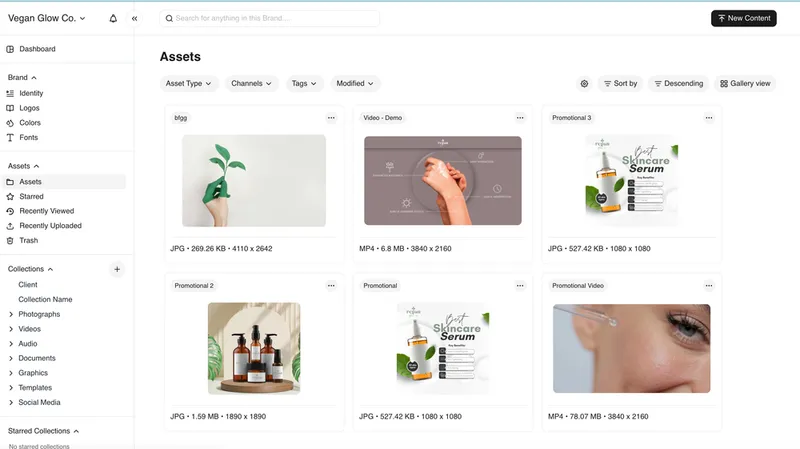
Detection and Monitoring with Online Reputation Crisis Management Tools
Early detection can mean the difference between a contained issue and a full-blown viral crisis. Companies today rely on a mix of online reputation management technology, analytics, and real-time monitoring to stay ahead:
- Social listening and AI-based sentiment analysis: Tools like Brandwatch or Sprout Social help track spikes in negative conversations and identify emerging issues before they escalate.
- Media and online monitoring: Platforms such as Cision or Meltwater monitor mentions, blogs, forums, and customer feedback to give a comprehensive view of brand perception.
- Competitor and industry benchmarking: Comparing your company’s reputation against peers helps spot anomalies or unusual sentiment shifts early.
- AI-driven analytics: Detect unusual surges in traffic, keywords, or engagement that may indicate reputational risk.
Survey revealed that 23% of consumers expect a response from brands on social media within 60 minutes, making speed essential.
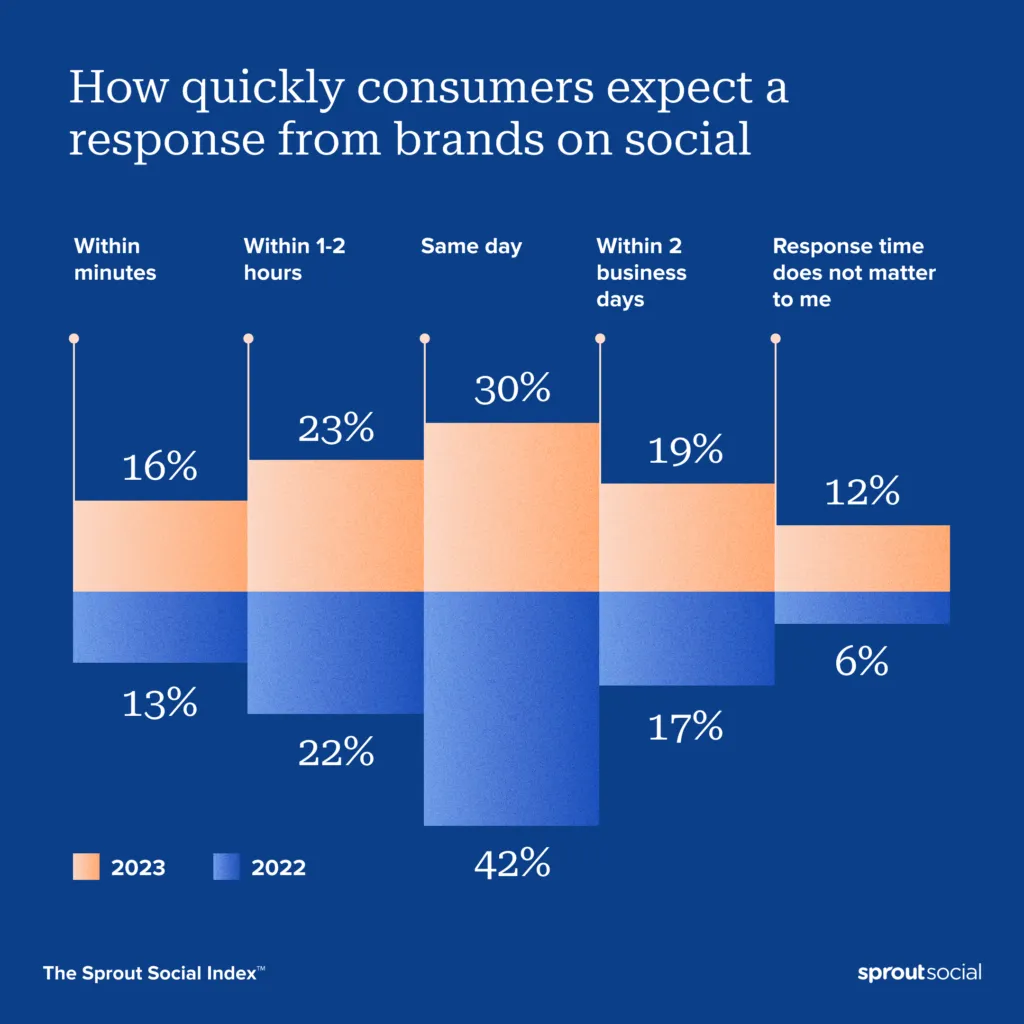
Response and Communication Strategies
When a crisis hits, clarity and coordination are critical. Brands that respond quickly and transparently are far more likely to preserve trust and limit financial or reputational damage.
Key elements of an effective crisis communication plan include:
- Designated spokespersons: Train individuals to speak consistently on behalf of the brand, preventing mixed messages.
- Message templates: Use pre-approved responses to speed up communication while maintaining tone and accuracy.
- Channel alignment: Ensure press releases, social media, emails, and other customer communications share the same facts and tone.
- Internal communication: Keep employees informed directly from leadership to prevent misinformation and maintain confidence.
- Corrective action: Clearly outline steps being taken to address the issue, showing accountability and commitment to resolution.
Pepsi’s swift recall of contaminated bottles in the 1990s is a classic illustration of rapid, transparent communication that helped rebuild public trust.
Using BrandLife, brands can further streamline responses as it integrates directly with Canva to create and save templates within the workspace.
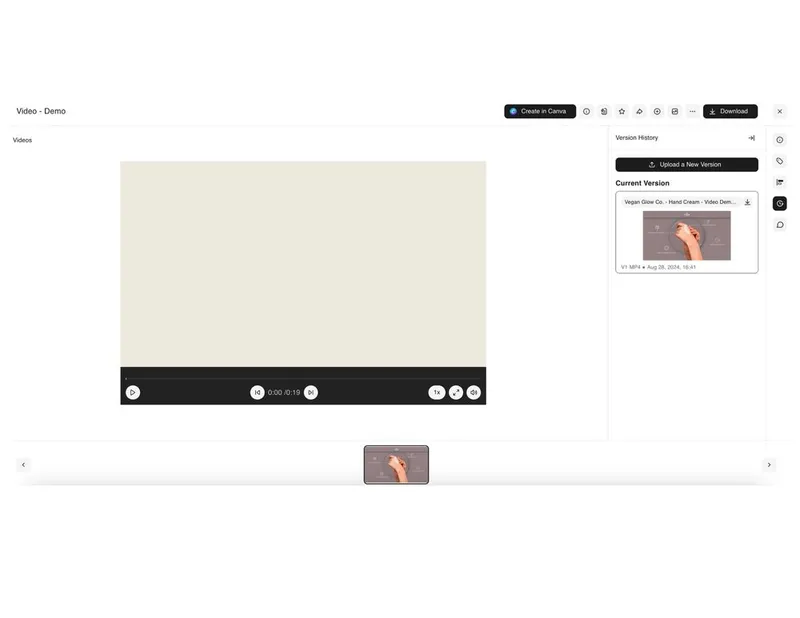
Crisis response teams can quickly access pre-approved designs and messaging, ensuring every communication is both on-brand and timely.
Rebuilding Reputation After Crisis
Once the immediate crisis has passed, the harder work begins: rebuilding reputation and restoring stakeholder confidence.
This stage requires not just words, but consistent actions that prove the brand has learned, adapted, and improved.
Key steps to regain customer trust include:
- Apologize authentically: Take responsibility and avoid vague or defensive language. A genuine apology sets the tone for reconciliation.
- Demonstrate corrective action: Implement measurable changes in policies, products, or processes that directly address the issue.
- Engage stakeholders: Involve employees, customers, partners, and even regulators in ongoing dialogue to show transparency and accountability.
- Highlight positive initiatives: Communicate progress through CSR projects, sustainability efforts, or community programs that reinforce brand values.
- Consider rebranding or repositioning: If a crisis fundamentally challenges core values, repositioning may help realign perception with long-term goals.
After its 2009–2010 recall crisis, Toyota invested in safety protocols, transparency, and new quality initiatives, helping restore consumer trust and reposition the brand as reliability-focused.
With brand management tools like BrandLife, companies can ensure that every step of the rebuilding process is consistently communicated.
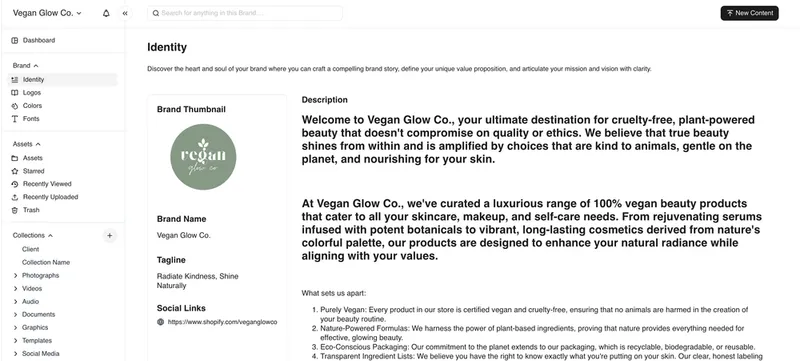
By storing updated brand guidelines, CSR assets, and stakeholder messaging in one platform, brands can deliver a unified narrative that reinforces credibility and commitment.
Leveraging Technology for Brand Crisis Management
In today’s fast-moving media landscape, technology is central to effective brand crisis management. Digital asset management platforms, in particular, provide the backbone for speed, consistency, and alignment during a crisis.
With digital asset management, brands can:
- Centralize assets: Store approved images, videos, press kits, and messaging in one secure, searchable hub.
- Maintain version control: Ensure teams use the most up-to-date materials, preventing outdated or conflicting communication.
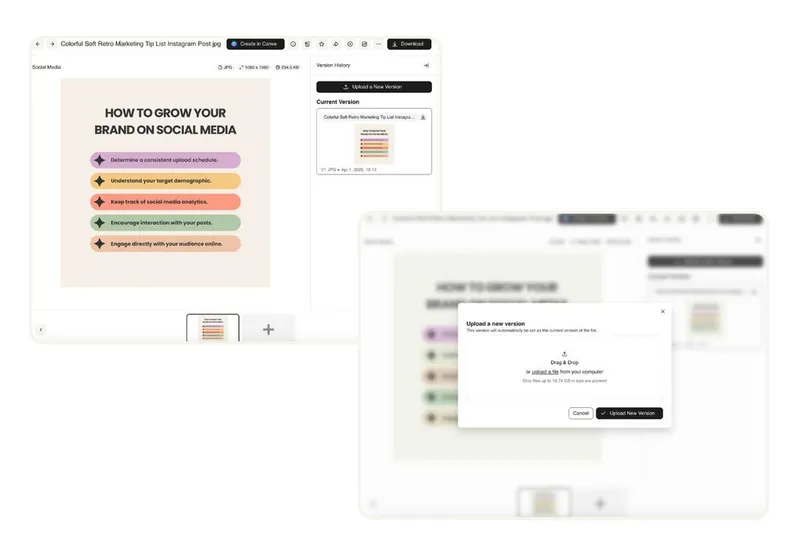
- Enable rapid deployment: Publish responses quickly across websites, social platforms, and email without delays.
- Protect brand consistency: Keep all messaging, tone, and visuals aligned with guidelines, even under pressure.
BrandLife’s digital asset management solution goes a step further by integrating directly with collaboration tools like Slack.

This allows teams to share, review, and approve crisis communication assets within their existing workflows—while simultaneously storing brand guidelines on voice, tone, and mission.
As a result, every communication, from the first response to ongoing updates, reflects a unified and reliable brand identity.
How BrandLife Supports Brands in Crisis
No brand is immune to crises. What separates resilient brands from those that falter is preparation, speed, and the ability to maintain trust. By adopting structured playbooks, real-time monitoring, and collaboration tools, marketing teams can safeguard their brand’s credibility.
With BrandLife, organizations gain a platform purpose-built to manage assets, align teams, and keep communications consistent. These are essential advantages when navigating high-pressure situations.
The ABARA Marketing Group reported a 50% faster asset retrieval rate and a 30% reduction in brand inconsistencies after adopting the BrandLife platform.
Here’s how BrandLife accelerates crisis management:
AI tagging and search

BrandLife’s AI automatically tags assets and makes them instantly searchable, so teams can quickly locate the right press kit, statement, or visual when every second counts.
Collaboration tools
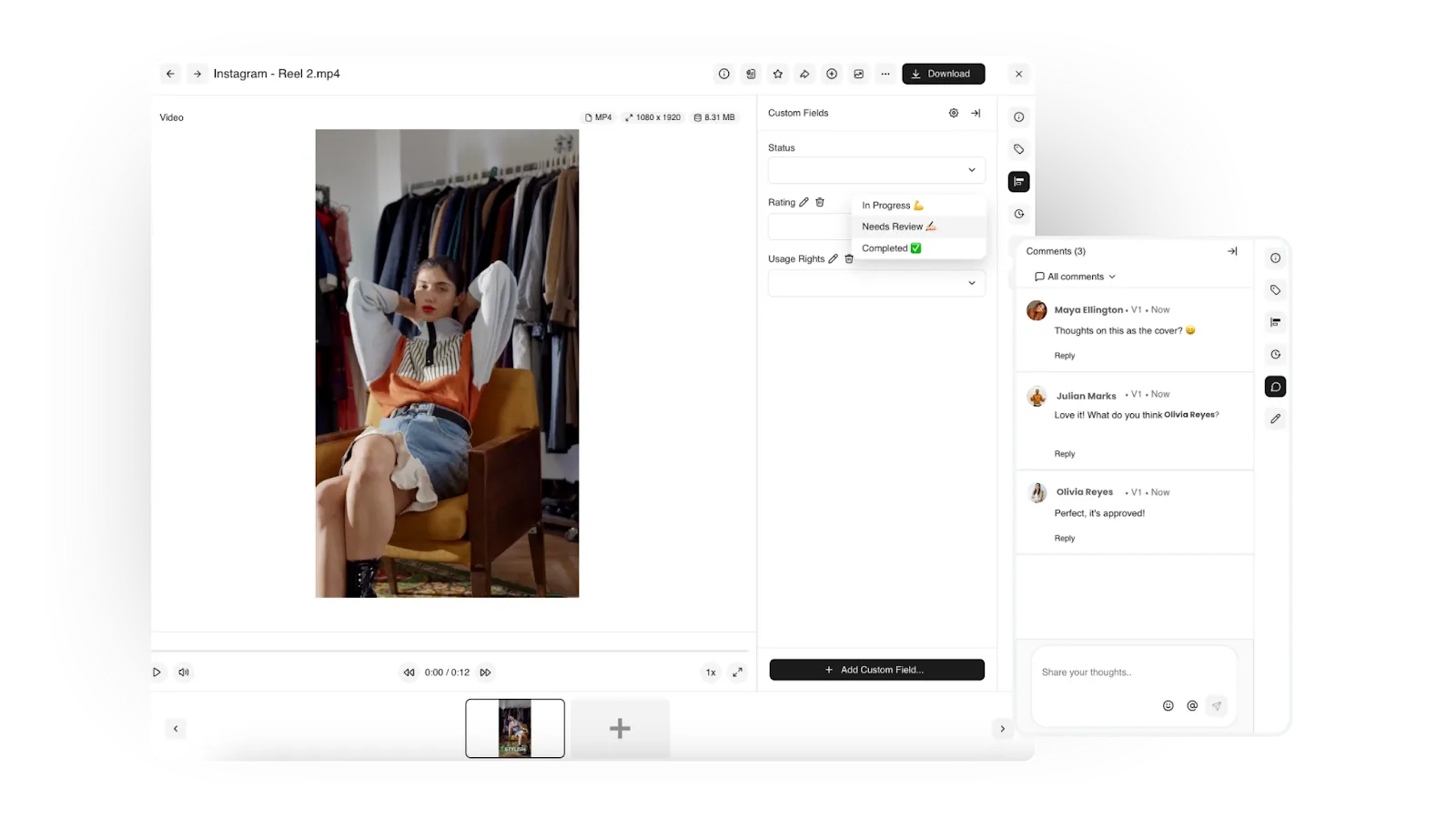
BrandLife’s built-in collaboration features, such as workflow approval, allow teams to share assets, leave comments, and approve updates in real time. This keeps cross-functional teams—PR, legal, and marketing—aligned during fast-moving crises.
Analytics dashboards

BrandLife tracks how assets perform across channels, helping brands measure the reach and effectiveness of crisis communications and adjust messaging strategies on the fly.
With these features, teams move faster, maintain consistency, and protect brand equity — even under pressure.
Start your 14-day free trial with BrandLife and give your brand the tools to respond faster, communicate smarter, and strengthen crisis readiness today.
Frequently Asked Questions
Brand reputation crisis management involves strategies and actions designed to safeguard a brand’s public image during challenging events. It emphasizes maintaining customer trust, minimizing financial and operational impact, and restoring credibility after a crisis.
Brand crises often stem from product recalls, data breaches, misleading marketing, leadership scandals, or social media missteps. Each can trigger public backlash, legal penalties, or long-term reputational harm if not managed well.
Digital asset management platforms like BrandLife centralize all approved assets, templates, and brand guidelines. This ensures teams can respond faster, maintain consistency across channels, and align communications with the brand’s tone and values.





